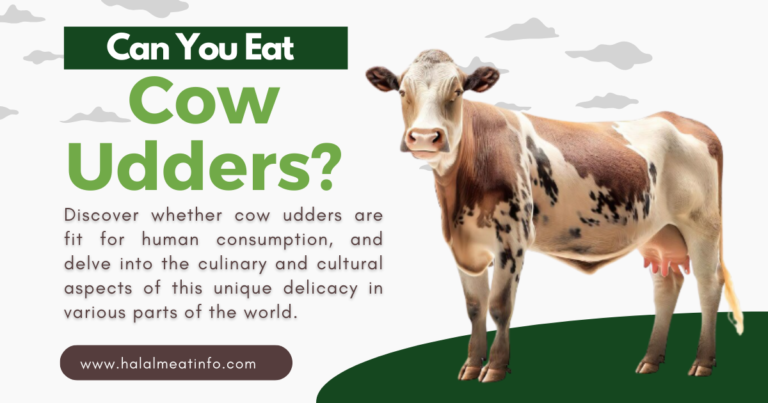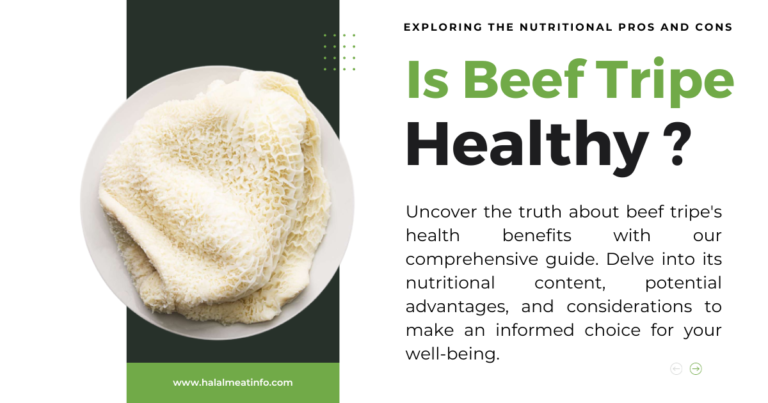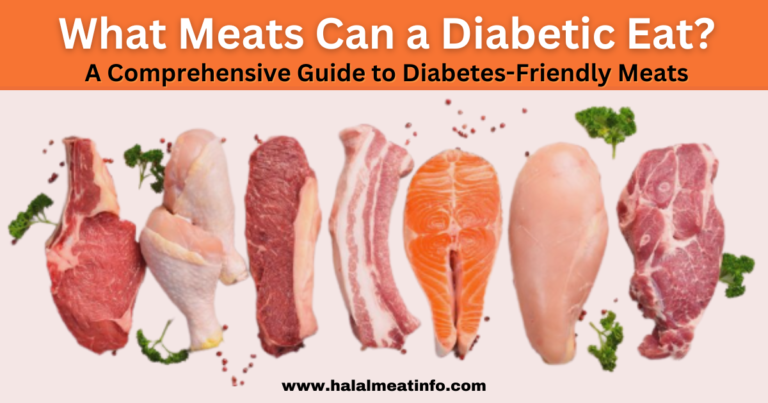Daily Meat Consumption: The Science Behind Balanced Meal Planning
Throughout history, daily meat consumption has been a fundamental part of human diets, offering vital nutrients and protein. However, as dietary trends evolve, questions arise about the ideal amount of meat to include in our daily diets. With an increasing focus on health, sustainability, and ethical considerations, finding the right balance is crucial for overall well-being. This article will explore the recommendations and factors to consider when determining how much meat to eat daily to maintain a healthy and balanced diet.

Introduction
Meat has long been an integral part of the human diet, providing nourishment and shaping cultural traditions and societal norms around the globe. The role of meat in our daily life extends beyond mere sustenance. Meat serves as a crucial source of high-quality protein, vitamins, and minerals that contribute significantly to our overall well-being. Consumed in moderation, it supports various bodily functions, including muscle growth and repair, immune function, and neurological health. Moreover, it is a cornerstone of many culinary traditions, signifying communal bonds and shared heritage. However, while acknowledging these benefits, it’s equally important to consider the environmental impacts and ethical considerations associated with meat consumption and production. This guide provides a balanced perspective on meat consumption, drawing on scientific research and expert opinions. Let’s embark on this journey towards healthier, more sustainable eating habits.
A Brief History of Meat Consumption
The history of meat consumption weaves a fascinating tale that dates back to the Paleolithic era. Early humans, or hominins, were predominantly herbivores; however, archaeological findings suggest that our ancient ancestors began incorporating meat into their diets approximately 2.6 million years ago. The advent of tools and the discovery of fire revolutionized human eating habits, allowing them to hunt larger animals and cook meat, which enhanced its digestibility and nutritional value. This shift towards a meat-rich diet contributed significantly to our species’ evolutionary development, including brain expansion and the acquisition of complex cognitive abilities.
Prehistoric Era
The exact time when our ancestors started consuming meat remains a matter of debate among scientists. However, evidence from archaeological excavations supports the theory that early humans were omnivores [1]. The consumption of meat was likely driven by necessity, and the advent of tools and fire further facilitated its incorporation into their diet.
Agricultural Revolution
The Agricultural Revolution, which commenced approximately 10,000 B.C., substantially changed the human diet. As people started farming and domesticating animals, meat became a more regular part of meals [2]. However, its consumption was still significantly lower compared to modern standards.
Industrial Revolution
The Industrial Revolution in the late 18th and early 19th centuries saw a surge in meat consumption, primarily due to advancements in transportation and preservation methods [3]. This period also witnessed the beginning of factory farming, which marked a substantial increase in meat production.
Modern Era
In the modern era, meat consumption has skyrocketed, with high-income countries leading the chart [4]. However, this trend’s environmental and health implications have also become increasingly evident, leading to a growing interest in plant-based diets and sustainable farming practices.
Understanding the Role of Meat in a Balanced Diet
Meat plays a significant role in our diets, being a key source of essential nutrients including protein, iron, zinc, and vitamins such as B12, which are crucial for our body functions [5]. However, the type and quantity of meat we consume is pivotal in ensuring a balanced diet.
The Nutrient Profile of Different Meats
Different meats have varied nutrient profiles. For instance, lean meats like chicken, turkey, and fish are excellent sources of protein and are low in saturated fat. Red meats, while rich in iron and zinc, tend to have higher levels of saturated fats [6]. Understanding these differences can help us make healthier choices.
Quantity Matters: The Recommended Daily Meat Intake
The American Heart Association recommends a maximum of 6 ounces (170 grams) of lean meat per day, which is roughly the size of two decks of cards [7]. This can be adjusted according to individual dietary needs and health goals.
The Perils of Overconsumption
Studies have shown that consuming large quantities of red and processed meats is associated with a higher risk of chronic conditions like heart disease, stroke, and specific types of cancer [8]. Balancing meat intake with other nutrient-dense foods is vital to minimize potential health risks.
How Much Meat Should You Eat?
Evaluating how much meat to include in your diet involves factors such as age, physical activity level, and any existing health conditions. While the specific amount can vary, general guidelines can be beneficial to consider.
Consider Your Dietary Needs
Each individual’s dietary needs can vary significantly. Factors such as your age, sex, level of physical activity, and health status can all determine how much meat you should consume. It’s important to consult with a healthcare provider or a registered dietitian to understand your unique nutritional needs.
Balance is Key
Moderation and variety are crucial when it comes to meat consumption. Aim for a balance between lean proteins, fruits, vegetables, whole grains, and healthy fats. This approach helps ensure you get a well-rounded intake of essential nutrients and minimizes potential health risks associated with excessive meat consumption.
Quality over Quantity
Shift your attention from the quantity of meat you eat to the quality of your meat selections. Opt for lean cuts, avoid processed meats, and try to choose organically-raised or grass-fed options when possible. Remember, a smaller portion of high-quality meat can be more beneficial than a larger portion of low-quality meat.
Plant-Based Proteins
Although meat is a significant protein source, it’s not the sole option available. Plant-based proteins like beans, lentils, tofu, and quinoa are great additions to your diet. Incorporating these can help reduce your meat intake, diversify your diet, and offer a variety of other health benefits.
Remember to Listen to Your Body
Your body serves as the most reliable indicator of its dietary needs. Observe how you feel after consuming various types of meat or different portion sizes to understand what works best for you. If you notice discomfort or changes in your health, it may signal the need to adjust your consumption.
You Might Like Benefits of meat vs vegetarian
Daily Meat Consumption Guidelines
The daily meat consumption guidelines vary depending on several factors including age, gender, level of physical activity, and overall health condition. It is crucial to understand these guidelines to ensure optimal health while mitigating potential risks associated with excessive meat consumption.
Children and Adolescents
For children and adolescents, lean meat is an important element of their diets due to the high demand for protein which aids in growth and development. The Dietary Guidelines for Americans 2020-2025 recommends 2-6.5 ounces (56-184 grams) of meat per day for children aged 2-18, depending on their age and sex [9].
Adults
According to the American Heart Association, adults should aim to consume a maximum of 5.5 ounces (156 grams) of lean meat per day. This falls within the recommended range for protein intake, which is 46-56 grams per day for adults [10].
Pregnant Women
Pregnant women require additional protein to support fetal development. The American Pregnancy Association suggests an intake of 75-100 grams of protein per day, which can be partially fulfilled by consuming 6-8 ounces (170-227 grams) of lean meat [11].
Seniors
As people age, protein needs to increase to counter muscle loss and maintain bone health. The American Society for Nutrition recommends 0.6 grams of protein per pound of body weight for people aged 65 and older. This can be accomplished by including an appropriate amount of lean meat in their diet [12].
Factors Influencing Meat Consumption
Several factors can influence an individual’s choice and frequency of meat consumption. These can vary widely based on personal beliefs, health considerations, and socioeconomic conditions.
Health Considerations
Health plays a pivotal role in shaping dietary choices. Many people opt for lean meats, poultry, or fish over red or processed meats due to the health risks associated with the latter. Conversely, specific health conditions might require a higher protein intake, increasing meat consumption [13].
Cultural Beliefs
Cultural traditions and beliefs significantly influence food habits. Certain meats are integral to traditional dishes and festive celebrations for some cultures. Conversely, certain religious or ethical beliefs may discourage or prohibit daily meat consumption altogether.
Socio-Economic Factors
Economic conditions can greatly impact food choices. Affordability of different types of meat can determine consumption patterns, with individuals in higher income brackets often having greater access to a variety of meat options, including high-quality or organic meats.
Taste Preferences
Personal preference is a major factor in dietary choices. Some people may prefer the taste of certain meats over others, influencing their consumption habits.
Environmental Concerns
Growing awareness of the environmental effects of meat production has prompted some individuals to decrease their meat intake. The desire to lower one’s ecological footprint can result in choosing plant-based proteins over animal proteins.
Nutritional Knowledge
People with a sound understanding of nutrition are likelier to make informed decisions about their meat consumption. Knowledge about the health implications of excessive meat consumption or the benefits of diverse protein sources can significantly shape dietary habits.
What Types of Meat Are Best?
When selecting the best types of meat for a balanced diet, it’s essential to consider nutritional quality, animal welfare, and sustainability. Here are a few types that combine these factors.
Lean Meats
Lean meats like chicken, turkey, and rabbit are known for their low saturated fat content, making them a healthier option. Additionally, they are rich in protein, providing essential amino acids.
Grass-fed Beef
Grass-fed beef is a good source of protein and essential nutrients like iron and B vitamins. Moreover, it typically contains higher omega-3 fatty acids and conjugated linoleic acid (CLA) than grain-fed beef.
Wild-caught Fish
Fish caught in the wild, such as salmon, mackerel, and sardines, are abundant in heart and brain-healthy omega-3 fatty acids. Additionally, they serve as a valuable source of lean protein.
Game Meats
Game meats such as venison, bison, and elk tend to be leaner and higher in protein than conventionally-raised meats. They are also often more sustainable, as they’re usually hunted in the wild and, therefore not subject to factory farming practices.
Organ Meats
Organ meats, also known as offal (like liver, heart, and kidneys), are nutrient-dense, providing high amounts of vitamins and minerals. However, due to their strong flavors, they’re often an acquired taste.
Remember, while these meats can offer nutritional benefits, they should be consumed in moderation as part of a balanced diet, rich in fruits, vegetables, whole grains, and plant-based proteins.
What Types of Meat Should Be Limited?
While meat is a significant source of essential nutrients, certain types should be moderated due to their potential health risks.
Processed Meats
Meats that undergo processing, like hot dogs, sausages, and bacon, frequently contain elevated levels of sodium, nitrates, and other preservatives. Consistent consumption of these processed meats has been associated with a higher risk of chronic illnesses such as heart disease, diabetes, and specific types of cancer [14].
Fatty Cuts of Red Meat
Fatty cuts of red meat, like ribeye steak or prime rib, are high in saturated fat. While these cuts can be a part of a balanced diet when consumed sparingly, frequent consumption can lead to increased heart disease risk due to their high cholesterol content [15].
Charred or Well-done Meats
Meats that are charred or cooked at high temperatures may contain harmful compounds like heterocyclic amines (HCAs) and polycyclic aromatic hydrocarbons (PAHs). Research has linked these compounds to an elevated risk of cancer [16].
Conventionally Raised Meats
Meats from conventionally raised animals may frequently contain antibiotics and hormones utilized in animal farming practices. While the impact of these substances on human health is a subject of ongoing research, some studies suggest potential links to antibiotic resistance and hormonal imbalances [17]. Whenever possible, opt for organically-raised or grass-fed meats.
The Effects of Consuming Too Much Meat
Increased Risk of Heart Disease
Excessive meat consumption, especially of red and processed varieties, has been associated with a higher risk of heart disease. This is primarily due to their high saturated fat content, which can raise cholesterol levels and cause a buildup of plaque in the arteries.
Obesity and Weight Gain
Excessive meat consumption can contribute to weight gain and obesity due to high calorie and fat contents. Studies have shown a correlation between high meat intake and increased body mass index.
Digestive Issues
Consuming large quantities of meat, especially red and processed meats, can lead to digestive issues. These meats are more difficult for the body to break down, potentially leading to discomfort and conditions such as constipation.
Increased Cancer Risk
Numerous studies have linked high consumption of red and processed meats to an increased risk of various types of cancer, including colorectal, stomach, and pancreatic cancers.
Environmental Impact
High demand for meat contributes to numerous environmental issues, including deforestation, water and air pollution, and climate change. The meat industry is responsible for a significant proportion of global greenhouse gas emissions.
Tips for Reducing Meat Intake
Making a conscious effort to reduce daily meat consumption can have significant health and environmental benefits. Here are some practical tips to consider:
Start Small
You don’t have to cut out meat entirely from your diet all at once. Start with small, manageable steps such as designating one day a week as a meat-free day, or reducing the portion size of meat in your meals.
Incorporate More Plant-Based Proteins
Plenty of plant-based proteins can serve as excellent alternatives to meat. Foods like lentils, chickpeas, tofu, tempeh, and quinoa are packed with proteins and can be used in a variety of dishes.
Try New Recipes and Cooking Methods
Exploring new recipes and cooking methods can make reducing meat intake more enjoyable. Countless vegetarian and vegan recipes are available online that are both delicious and satisfying.
Be Mindful of Nutrient Intake
It’s crucial to ensure you’re still getting the necessary nutrients when reducing meat intake. Pay attention to your intake of essential nutrients like iron, zinc, and vitamin B12 which are commonly found in meat.
Consult a Nutritionist or Dietician
If you need more clarification about your dietary needs or how to replace meat in your diet, consider consulting a nutritionist or dietician. They can provide personalized advice based on your specific needs and lifestyle.
FAQ’s
Certainly, it is entirely feasible to sustain a well-balanced diet without consuming meat. Many plant-based protein sources, like lentils, chickpeas, tofu, tempeh, and quinoa, can serve as excellent substitutes for meat.
Overconsumption of meat, particularly red and processed meats, can lead to an increased risk of heart disease, weight gain, obesity, digestive issues, and various types of cancer.
Yes, reducing meat intake can have significant environmental benefits as the high demand for meat contributes to numerous environmental issues, including deforestation, water and air pollution, and climate change.
You can start by taking small, manageable steps such as designating one day a week as a meat-free day, or reducing the portion size of meat in your meals.
A nutritionist or dietitian can provide personalized advice on reducing meat intake while ensuring you’re still getting the necessary nutrients.
Conclusion
In conclusion, while meat can be a rich source of essential nutrients, balancing daily meat consumption with other protein sources is critical to maintaining a healthy diet. Overconsumption of certain types of meat can lead to various health risks, including heart disease, obesity, digestive issues, and cancer. In addition, the high demand for meat contributes to significant environmental issues. By consciously reducing meat intake and incorporating more plant-based proteins into our diets, we can enjoy significant health benefits and contribute to environmental sustainability. Remember that small, manageable steps like incorporating meat-free days and reducing portion sizes can make a big difference. And if you need clarification on making dietary changes, consult a nutritionist or dietician for personalized advice. A mindful approach to diet can lead to a healthier lifestyle and a healthier planet.






